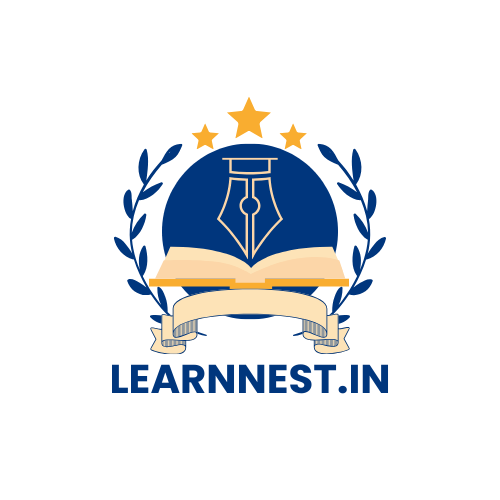Substances in the Surroundings-Their States and Properties Q & A

Q.1. In the paragraph below write ‘solid’, ‘liquid’ or ‘gas’ in each of the blank (brackets) depending on the substance referred to just before.
On a bright sunny day, Riya and Gargi are playing with a ball (solid) in the park. Gargi feels thirsty. So, Riya brings tender coconut water (liquid) for her. At the same time, a strong breeze (gas) starts blowing and it also begins to rain (liquid). They run back into the house (solid), change their clothes (solid) and then their mother gives them a cup (solid) of hot milk (liquid) to drink.
Q.2. Discuss.
(a) Riya pours some water from her bottle into another bottle. Does it change the shape of the water?
Ans: Yes, it changes the shape of the water as it is in liquid state and liquids do not have their own shape that’s why they take the shape of the container.
(b) Halima picks up a small stone from the ground and puts it in the water in a dish. Does the shape of the stone change?
Ans: No, the shape of the stone doesn’t change because it is in solid state that’s why it remains as it is.
Q.3. Write the properties of these substances.
(Water, glass, chalk, iron ball, sugar, salt, flour, coal, soil, pen, ink, soap)
Substances | Properties | |
1. Water | Fluidity, density, solubility, transparency, thermal conductivity. | |
2. Glass | Brittleness, hardness, density, transparency. | |
3. Chalk | Brittleness, density. | |
4. Iron ball | Hardness, density, malleability, ductility, electrical ductility,thermal conductivity, lustre, sonority. | |
5. Sugar | Brittleness, density, solubility. | |
6. Salt | Brittleness, density, solubility. | |
7. Flour | Density, solubility. | |
8. Coal | Brittleness, density, thermal conductivity. | |
9. Soil | Brittleness, density. | |
10. Pen | Hardness, density. | |
11. Ink | Fluidity, density, solubility. | |
12. Soap | Brittleness, hardness, density, solubility. |
Q.4. What is sublimation? Write the names of everyday substances that sublimate.
Ans: The change of a solid substance directly into a gas or vapour without first changing into liquid is called sublimation.
Substances that sublimate: Camphor, napthalene balls, ammonium chloride, iodine.
Q.5. What is made from? Why?
(a) A sickle to cut sugarcane.
Ans: A sickle is made of iron and it is used to cut sugarcane.
(b) The sheets used for roofing.
Ans: The sheets used for roofing are made of plastic, aluminium.Plastic is hard and transparent that’s why it protects against weather conditions, sunlight can pass through it and aluminium is hard, light weight and durable and malleable that’s why it protects against all weather conditions and formed into thin sheets.
(c) A screwdriver.
Ans: A screwdriver is made up of iron, steel, aluminium. It is used pierce a screw in wood, wall, metals etc.
(d) A pair of tongs.
Ans: A pair of tongs are made up of iron, steel aluminium etc. Tongs are used to lift hot, boiling utensils or vessels.
(e) Electric cables.
Ans: Electric cables are metal wires (thin) wound in plastic.Metal wires possess the property of hardness, ductility, electrical conductivity.Plastic /rubber covering possesses the property of hardness, elasticity and are bad conductors of heat and electricity.
(f) Ornaments.
Ans: They are made up of metals like gold and silver.They are used to wear usually on any occasion like festivals, weddings, parties etc.
(g) Pots and pans.
Ans: They are made up of metals like steel and aluminium.They are used for cooking food.
Q.6. What will happen if ….? And why?
(a) Nails are made of plastic
Ans: If nails are made of plastic so they will not be able to pierce anything like wood, wall, metals etc.
(b) A bell is made of wood.
Ans: If a bell is made of wood then it will never make a ringing sound. A wooden bell does not have the property of sonority.
(c) Rubber is not fitted on a pair of tongs.
Ans: If rubber is not fitted on a pair of tongs, we will not be able to lift any hot objects with it.
(d) A knife is made of wood.
Ans: If a knife is made of wood then it wouldn’t be sharp and wouldn’t be able to cut fruits and vegetables.
(e) An axe is made of rubber.
Ans: If an axe is made of rubber, it will not be able to cut wood or tree.
Q.7. Who am I?
(a) I’m found in a thermometer, I measure your temperature.
Ans: Mercury
(b) I make things hot or cold.
Ans: Heat
(c) I have no shape whatsoever!
Ans: Liquid, gases
(d) I dissolve in water, but not in kerosene.
Ans: Salt
Q.8. Why does this happen?
(a) Coconut oil thickens in winter.
Ans: If coconut oil thickens in winter then it can’t be applied on hair.
(b) Kerosene left open in a dish disappears.
Ans: When kerosene is left open in a dish, it is exposed to surrounding temperature. As the temperature is high, kerosene will start continuously evaporating and will be disappears.
(c) The fragrance of incense sticks lighted in one corner of a room spreads to the other corner.
Ans: The fragrance of incense sticks is given out in the form of scented vapours. As vapours are in gaseous state, the gas molecules spread out in the room. The molecules of gas move very fast and there are no forces to stop them from going apart. Therefore the fragrance of incense sticks lighted in one corner of room spreads to the other corner.
(d) What you see in the picture.
Ans: I see a tankful of water. It has a ball floating on the surface of water and an apple inside the water.
